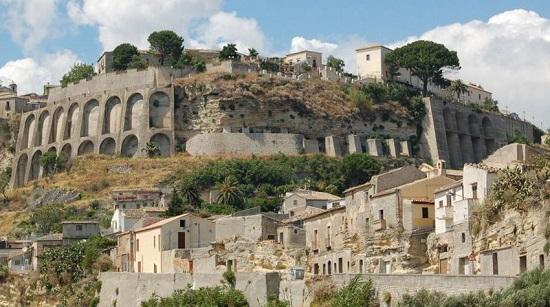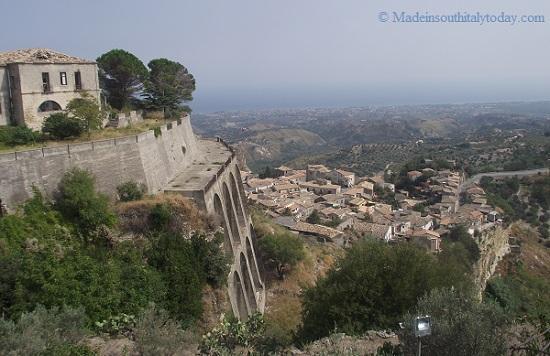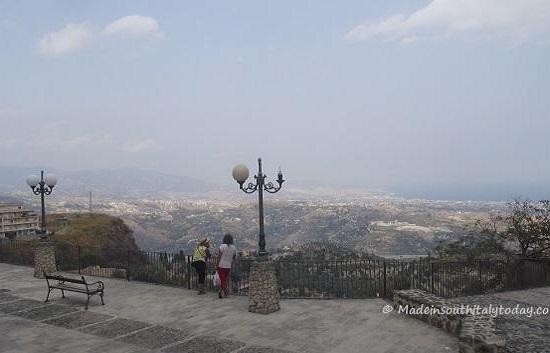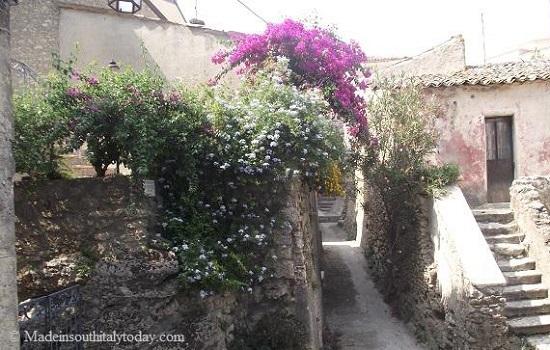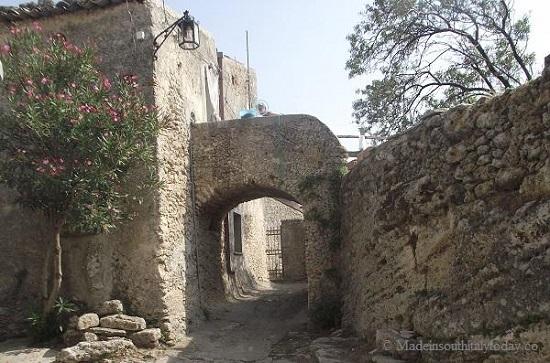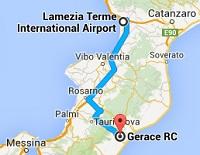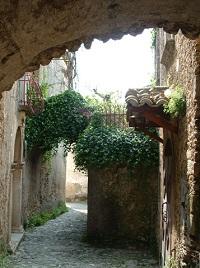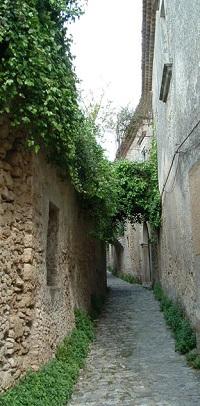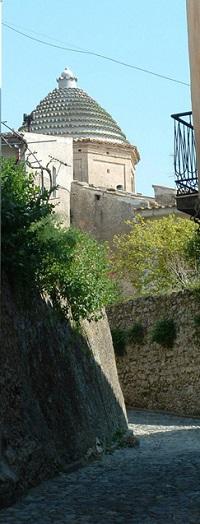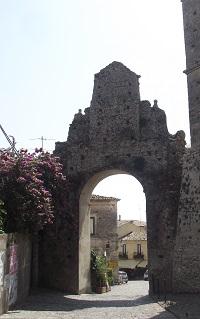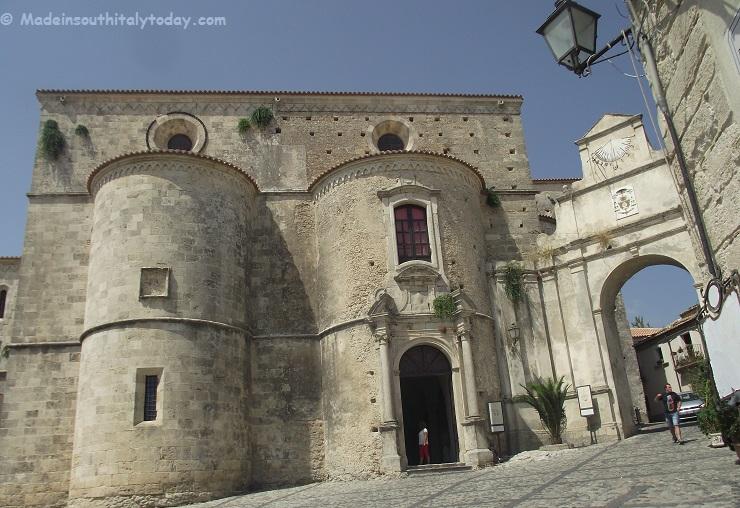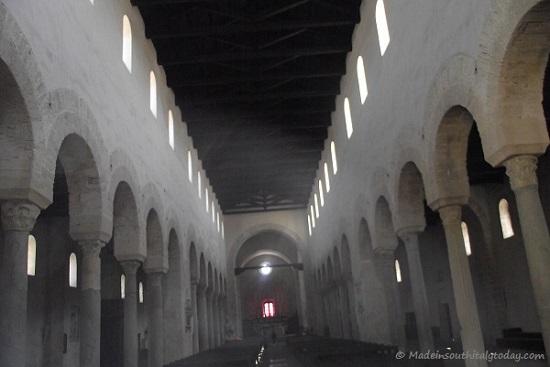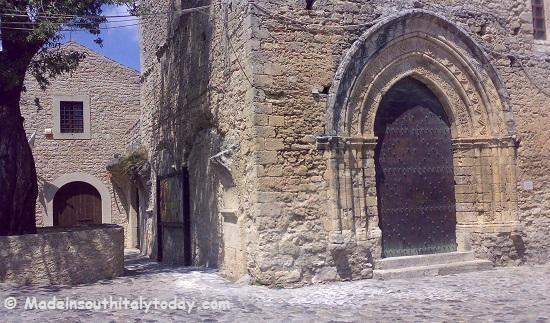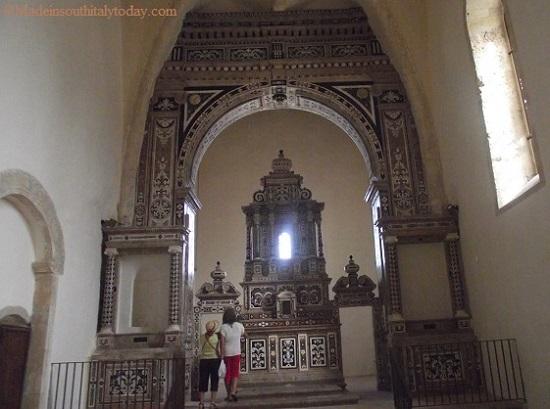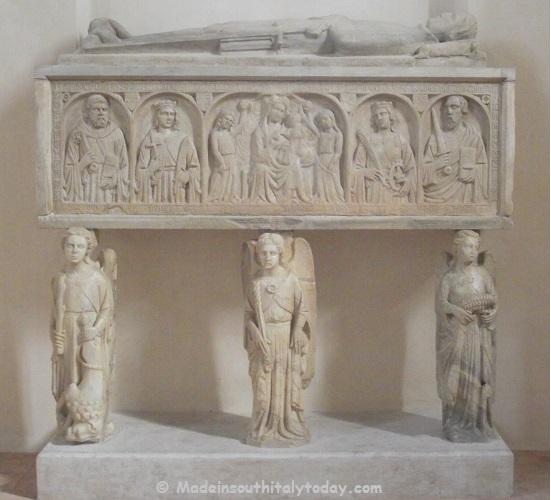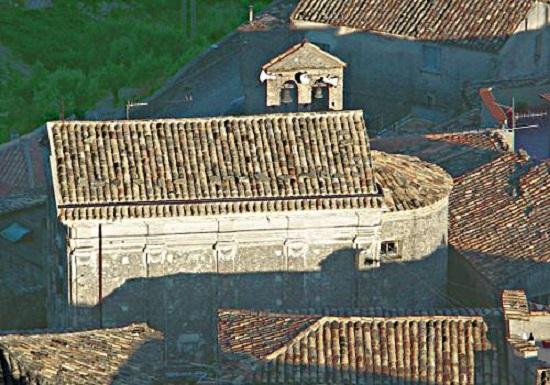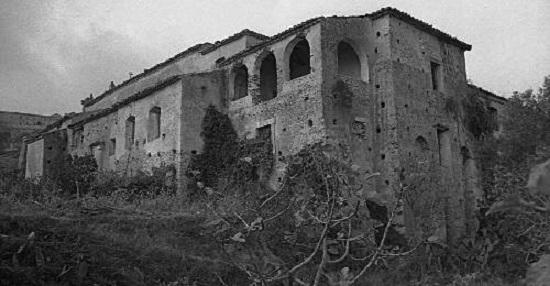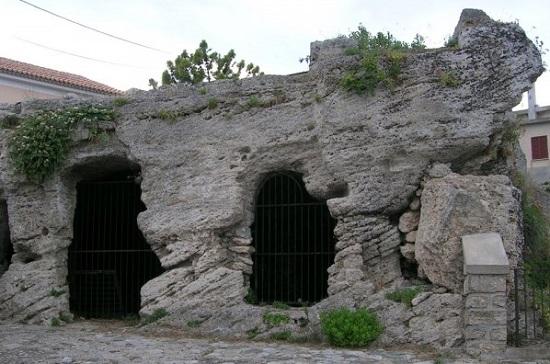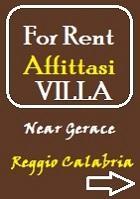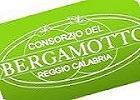Gerace
|
Gerace is one of the most evocative inhabited historic centre in Calabria. Amazing views all around; every single stone, sanctuary, or palace seemed to have been painted and arranged purposely.
|
Intro
History notes
Churches and monuments
Where to stay

The town sits atop a 500 m vertical rock formed of conglomerate of sea fossils from 60 millions years ago, located 10 km inland from the ancient city of Locri.
The tourist who wants to explore Calabria , must visit Gerace, (from the Greek lerax , "Sparrowhawk") within the Aspromonte National Park.
The hamlet is also known as "Firenze del Sud " (Florence of the South) due mainly to the high number of churches which underline how important this town once was.
|
|
|
Welcome to Gerace - Founded around the 9th century in a breathtaking panoramic position, . Its unique position limited the construction of new buildings helping preserving its medieval characteristics. Its castle gives it an evocative medieval atmosphere. The cathedral is Calabria's biggest.
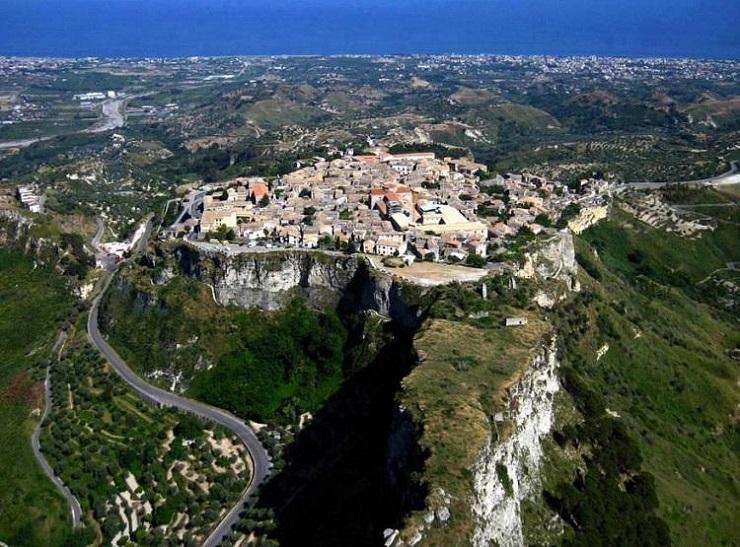
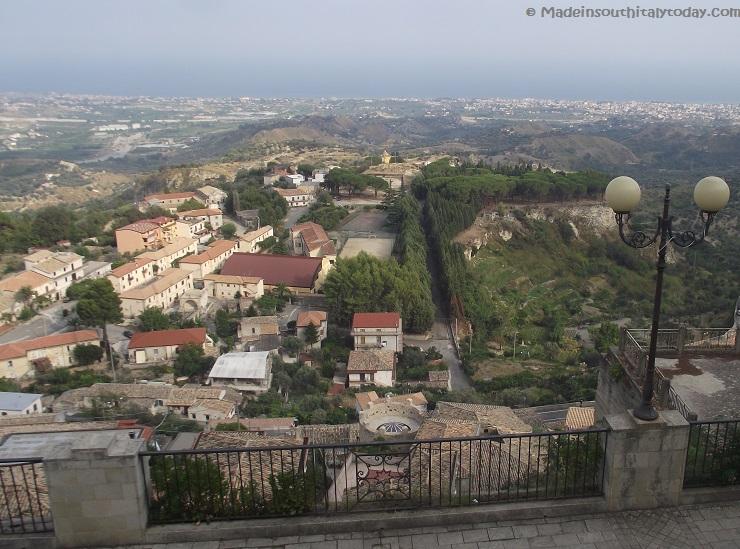
|
|
The built-up area of the town follows the natural contours of the terrain and spreads over three gradients: Borgo Maggiore (main hamlet) on the lowest gradient, Borghetto (little hamlet) in the middle and the town proper on the highest gradient.
Before arriving to Gerage is worth paying a visit to Borgo Maggiore, characterized by rooms dug in the tuff housing local trades and now used as storage, workshops/caves of local master potters (argagnari in dialect) dug into the mountain tufa. There are two entrances to the town, and this is one.
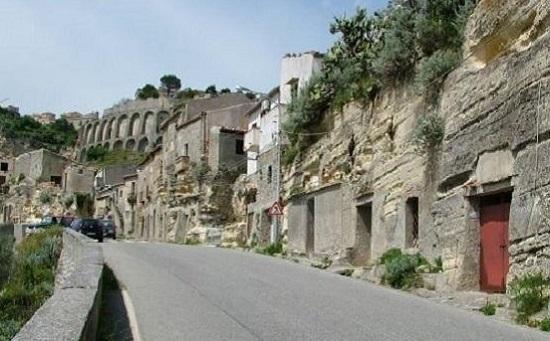
The town is surrounded by the so called 'Bombarde' such as the ones below.
This flattened runs were once used to place the cannons to defend the coast. Today they are instead used to admire the breathtaking view of the valley and the city of Locri with its blue Ionian sea.
After the Byzantine re-conquest of Italy (6th century), the town became an administrative, military and religious capital under the name of Santa Ciriaca.
In 986 the Saracens briefly conquered the city, but it returned to Byzantine control until the Norman conquest in 1059.
During the Sicilian Vespers (late 13th century), Gerace was occupied by the Aragonese Admiral Roger of Lauria who turned it into his own feudal estate; later it became a "Royal City".
Situated in the town centre are multiple churches and Renaissance palaces, once serving as both residences and workshops, there are very characteristic small roads leading to inspiring landscapes as well as several small piazzas surrounded by architecture spanning several centuries.
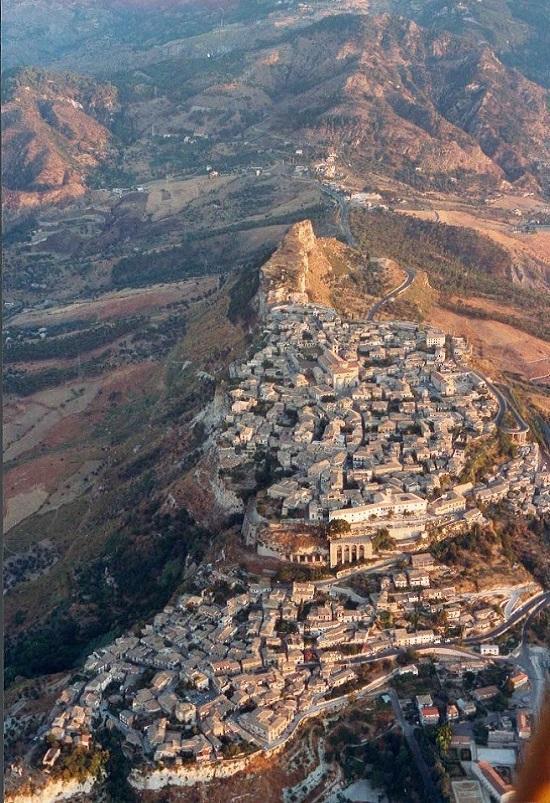
The excellent strategic position of the cliff with its steep face and massive well-fortified boundary wall with its defensive devices meant that the town was absolutely impregnable. The town could be reached only through a series of both outer and inner gates.
Twelve in all, the first six stood in the boundary wall and were part of the town's first defence system, while the remaining six, enclosing the inhabited area in smaller circles, were an additional means of protection.
Only four gates have survived, all devoid of their leaves; an outer one, Porta Maggiore or Porta del Borghetto as it is known, restored in 1887, and three inner ones: Porta del Sole, Porta di Santa Lucia and Porta delle Tribune.
Below is the old Sun Gate (Porta del Sole) entrance to the city. So called because, as it face eastwards, the sun's rays shine through its arches at dawn...
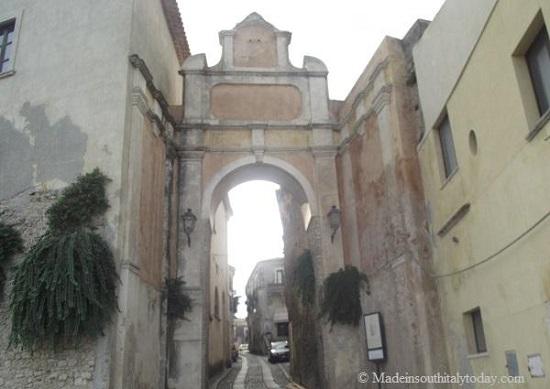 Porta del Borghetto
Porta del Borghetto

If you go through Porta del Borghetto and proceed along the street, passing through the internal Porta del Ponte, you reach the beginning of the 'Passeggiata delle Bombarde'.
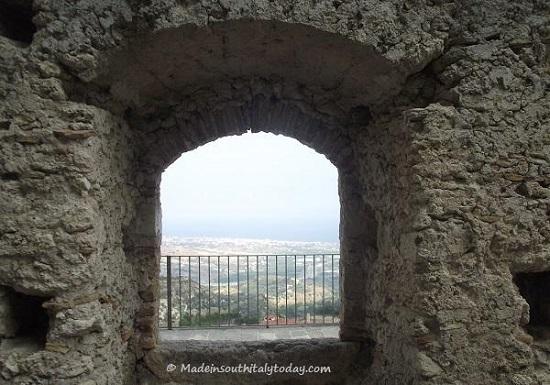
One the many attractions of Gerace are the remains of the old Norman Castle (probably begun in the 12th century by the Byzantines) of which only one tower remains. It is situated in the upper part of the town.
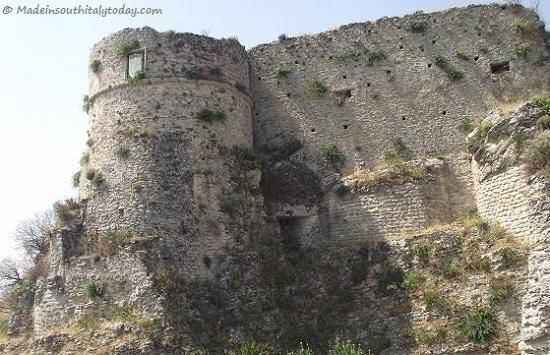
About town
The Borghetto is embellished by sumptuous and elegant residences endowed with portals made up of stones molded by local stonecutters.
Among the most relevant residences there is the noteworthy Palazzo Grimaldi-Serra dating back to the the 17th c. and restored in the 19th c.
A nice series of loggias from the 16th c. can be admired at Casa Zangara.
Not to be missed is the semicircular portal of Casa Lucifeo, the piers of which are endowed with decorative motifs as well as the keystone.
|
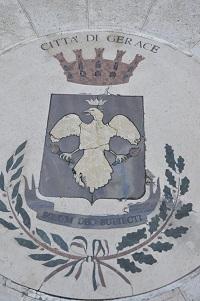
The town is located approximately 120 km away from the Lamezia International Airport.
According to a legend, the inhabitants of the coast, fleeing from a Saracen attack in 915 CE, were led by a sparrow hawk to the mountains commanding the area of Locri, and here they founded the city.
There are two other theories regarding the meaning of Gerace.
One is linked to the history of Locri during the Magna Graecia: Gerage served as its acropolis ( Greek Hieros-akis, holy peak).
Another one suggest the name derives from the Byzantine Aghia (saint) Ciriaca, as Gerage was known in old times.
A new modern town, Gerace Marina, was built on the coast in the 19th century to house new public buildings. The name was changed to Locri in 1934.
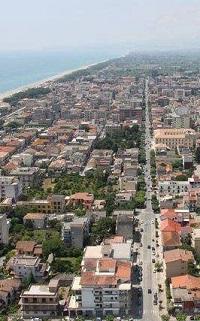 About and around
About and around
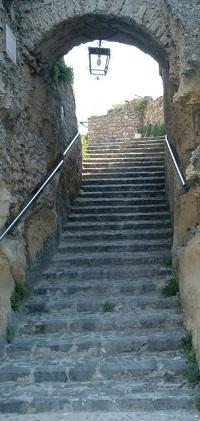 To better enjoy the enchanting little town and its medieval architecture, you should just wonder the streets and alleys without fear of getting lost, the side streets all lead back to the square.
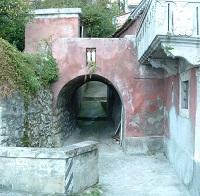

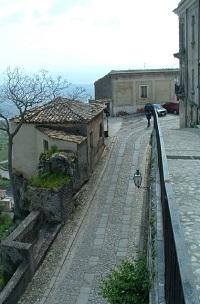
Arco dei Vescovi
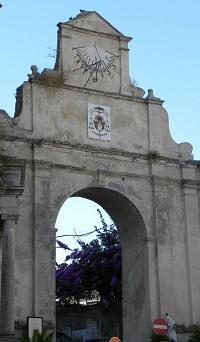
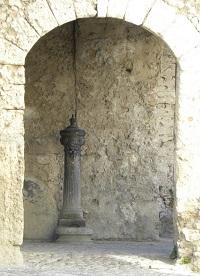
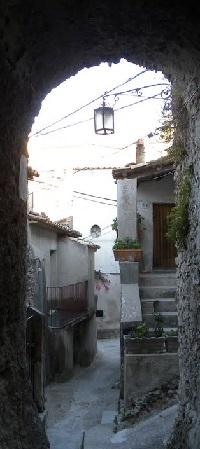
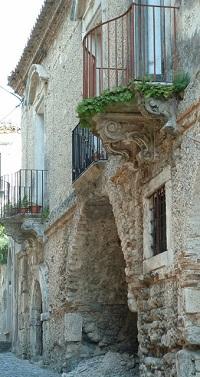
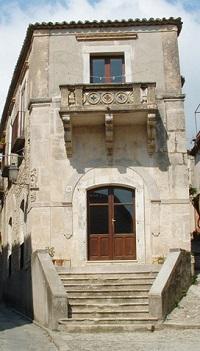
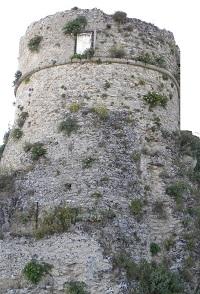
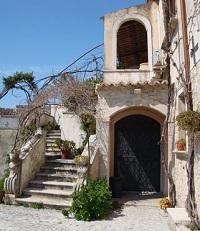
Monuments
& Churches
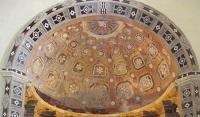
A high architectural relevance is to be attributed to the incredible series of churches: an exhaustive list of them is practically impossible...learn more
|
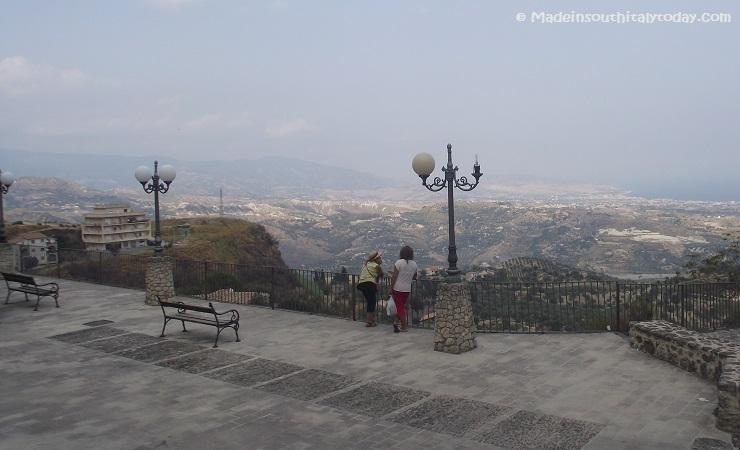
Monuments & Churches |
|
|
Gerace was once home to 128 churches; the most noteworthy amongst the remaining ones include :
Church of the Sacred Heart of Jesus-The church was built on the old plan building dedicated to St. Stephen named S.Maria della Sanità. Destroyed during the hearthquake of 1783, was rebuilt by the Fraternal Order of the Sacred Heart and of Our Lady Rosary in 1851 (still operating) under the latter title. The ceiling is decorated with stucco and images taken from the Old Testament. The floor is in majolica. The organ dates back to 1888. The portal and the facade are in Baroque style, while the dome is in hanging roof tile.
Photo kindly provided by Renato Zavaglia

The Duomo
Calabria's largest- Built during the first half of the 11th century, the imposing structure has a basilica design with protruding transepts and three semicircular apses. It was built on the remains of a pre-existing sacred structure devoted to Aghìa Kyriakì (Saint Ciriaca) dating back to the eighth century, between 1085 and 1120, under Normans domination.
|
Its Latin cross interior has a nave and three aisles dotted with columns taken from other structures. The wide longitudinal form is divided into three aisles by twenty granite and marble columns some fluted some smooth, interrupted in the middle by two pillars surmounted by T shaped capitals in various shape, probably originating from temples from the nearby city of Locri.
Along the left aisle there is the bas-relief depicting the Incredulity of St. Thomas , from the first half of the '500. The apse houses the altar of the Sacred Heart of Mary made in 1771 by sculptur -Neapolitan scoulptur Domenico Mazza.
Of particular interest is the church attached to the convent of St. Francis of Assisi, whose foundation dates back to 1296. The portal is a triple archway decorated with Arabic-Swabian geometric friezes.
The interior is illuminated by a single pointed arch and it dominated by the magnificent altar commissioned by “Fra 'Bonaventure Perna” in 1664, beautifully inlaid with colored marbles.
The altar represents the synthesis of artistic experiences in Europe, occupying a central position in southern baroque art.
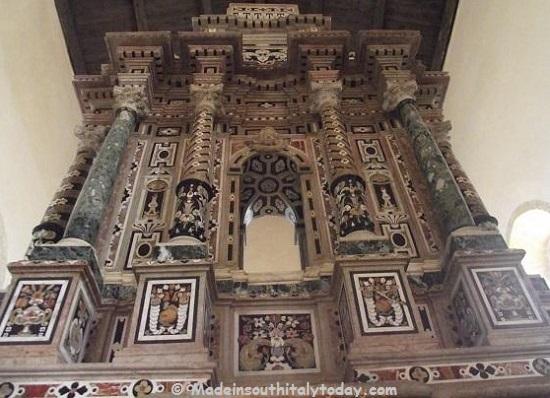 Behind the altar it is situated the sarcophagus of Prince Nicholas Ruffo (1372), military Angevin commander of the fortress of Gerace, depicted in military clothes with his hands crossed on his sword and his feet resting on two dogs. This tomb, of Neapolitan workmanship, bears inscriptions in Gothic characters and it is supported by three winged figures symbolizing Fortitude, Faith and Charity.
Behind the altar it is situated the sarcophagus of Prince Nicholas Ruffo (1372), military Angevin commander of the fortress of Gerace, depicted in military clothes with his hands crossed on his sword and his feet resting on two dogs. This tomb, of Neapolitan workmanship, bears inscriptions in Gothic characters and it is supported by three winged figures symbolizing Fortitude, Faith and Charity.
Church of Maria SS. Carmine- It was built with a single aisle between the sixteenth and seventeenth century by the homonym Fraternal Order, whose first Statute dates back to 1777.
The two aisles and the coffered ceiling were added in 1908.
The church of St. Maria del Mastro was founded in Norman Age (1083-1084) and dedicated to “megalomartiri” Eustrazio and Catherine. Excavations by the Archaeological Superintendence of Calabria, brought to light several ossuaries, ceramic range, decorated stucco the twelfth century.
The transition from Latin rite to Greek rite in the Diocese, which occurred in 1480, caused the cancelation of the apse that turns eastward. The church was damaged by the earthquake of 1908. In ancient times it was operating the Fraternal Order of St. Mary of Pigliano'.
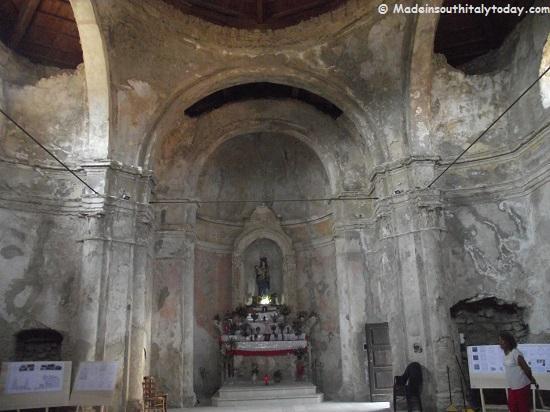
Church of St. George Martyr - Demolished after the earthquake of 1783, the church was rebuilt in 1876 with a single aisle.
Among the preserved works of art there is an oil on canvas of exquisite eighteenth century of Neapolitan school representing St. Joseph and Child, Madonna in Glory with Angels appearing to S. Biagio of Francesco Saverio Mergolo (1746-1786) probably made in the eighth decade of the eighteenth century.,
There are Lustral pillars of 1646 belonged to the church of S. Biagio, a chalice in silver plate embossed with chisel base decorated with motifs of grape vines of 1776.
Capuchins’ Monastery and Church of St. Maria delle Grazie - The Monastery is of a simple style and it is situated in the so called “Piana”.
The church with the title of S. Maria La Nuova was assigned in 1534 to the monks, who built the convent during the seventeenth century and it was completed in its four-sided structure.
Church of Santa Maria di Monserrato - Built in 1636 with a single hall, is surmounted by a dome feature tiles. Inside the church there are the remains of the Latinist Francis Nicolai and a wooden statue of the Madonna, of ancient workmanship, situated on an altar wanted and commissioned by the pharmacist Carusetta Antonio in 1744. In the vault of the presbytery, hidden under a coat of paint, there traces of frescoes of the sixth century. Next to it there is the ruin of the hermitage.
Catacombe of St. Nicholas Cofino - It is the typical site of early Christian Byzantine prayer. Basket-shaped, it has three naves and could date back to seventh-eighth century .. Inside there are traces of frescoes (X-XII century)..Below a view of what is left of the Catacombs.
|
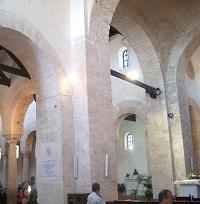
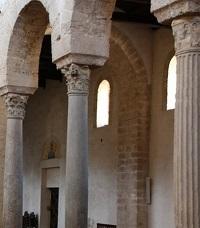
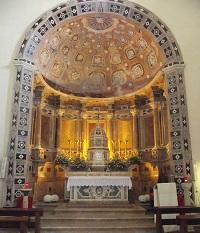
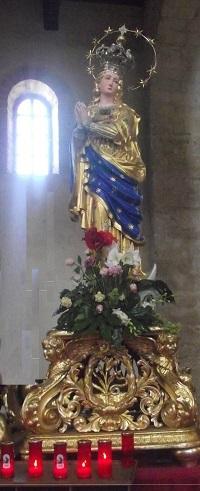

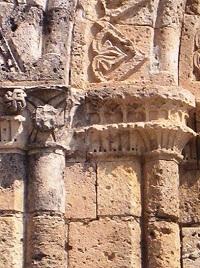
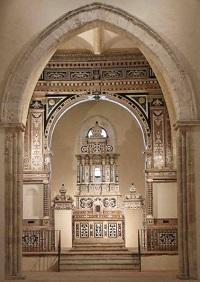
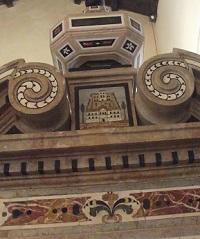
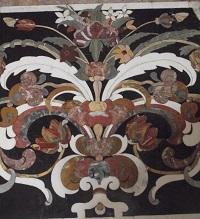
Church of
St. Giovanni Crisostomo (Also known as “ San Giovanello”).
Like all Byzantine churches the apse faces to the east.
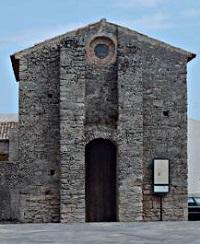
Church of
St. Maria del Mastro
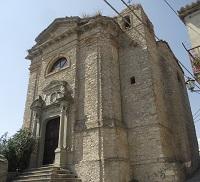
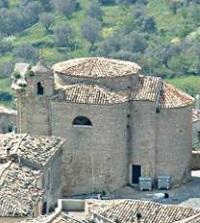
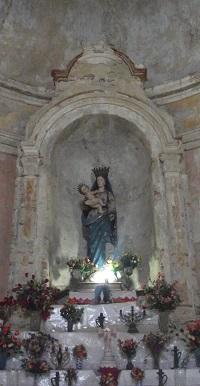
Other churches worth mentioning:
Church of
St. Catherine
The church, of Norman Age, is divided into three naves. The central portal of 1705 was made by local craftsmen.
In the west wall are identified the remains of a portal that probably was the ancient point of entrance in Byzantine Age.
Church of Maria
SS. Addolorata
The church of Maria SS.
Addolorata, it has an elliptical plan, formerly dedicated to St.Peter the Apostle. Inside there are paintings of Maria SS.Addolorata with S. Philip Neri(XVIII sec.), Christ in front of Caifa and Christ at the Column. In the choir place there is an organ of 1850.
Monastery of
St.Anna
Over the so called “Bombarde”
Passed from the Brazilian nuns to the Augustinian nuns, in 1554 were incorporated the menials of S.Venerable and in 1734 those of the monastery of St. Annunziata, and in 1797 the Brazilian of S. Pantaleon.
Church of St.
Michele de' Latinis
The present building probably dates back to the sixteenth century. The main entrance is of 1687. On one side we have a walled portal of the thirteenth century. Since 1997, the church is dedicated to victims of violence.
Church of St. Martin
Of Byzantine origin as it is evidenced by a small cemetery nearby, it was rebuilt after the earthquake of 1783.
The facade is of the late Baroque-style neoclassical with bell tower and spire on the top.
The inside structure has a single aisle. In ancient times there was a fine pipe organ.
|
|
|
| Where to stay when in Gerace |
Villarosa is the perfect spot to spend a relaxing holiday relishing the sea the sun and the views of the surrounding rugged mountains and the valleys below.
Breathtaking sunrise and sunset can be enjoyed from the various balconies and terraces of this idyllic villa creating the right atmosphere for a romantic stay....
learn more >>> |
Il Giardino di Gerace - Gerage's Garden - Uniquely positioned on the slopes of Gerace with five terraced gardens all facing the beautiful Ionian sea - find out more >>> |
Holiday-House "Lo Sparviero" -
Located in the heart of Gerace, the holiday home "The Hawk" offers 8 beds in comfortably furnished rooms with TV and air conditioning. Tourists can stay in a climate of hospitality and friendship while enjoying the beautiful scenery and historical and cultural site. Located in Via Nazionale, #15 |
La Casa di Gianna - Intimately connected with the environment is Gerace's La Casa di Gianna hotel-restaurant housed in an ancient aristocratic residence that retains the charm of a private house and welcome guests with the warmth reserved for loved ones. >>> |
La vetrina ideale per promuovere i vostri prodotti e servizi sul mercato Nord Americano ma che potrebbe essere un punto di visibilità anche nei vari mercati internazionali.
AZIENDE - PRODUTTORI - STRUTTURE RICETTIVE - GUIDE TURISTICHE - TOUR OPERATORI
Ai nostri visitatori piace il Sud Italia, vuoi dire loro qualcosa?
Il nostro obiettivo e' quello di promuovere prodotti tipici del Sud in un contesto di marketing globale, e allo stesso tempo proporre
il nostro Meridione come alternativa turistica, ben consapevoli che il successo dell'uno è essenziale per il successo dell'altro.
Paesi di provenienza dei visitatori in ordine numerico
Stati Uniti - Canada - Italia - Gran Bretagna - Australia - China - Germania - Francia - Nuova Zelanda - Olanda
Coloro interessati ad inserire la loro attivita'/azienda/ nel sito
sono pregati di mettersi in contatto usando il modulo sottostante .
Per saperne di piu'...

|

 Tabs you may want to check
Tabs you may want to check 



